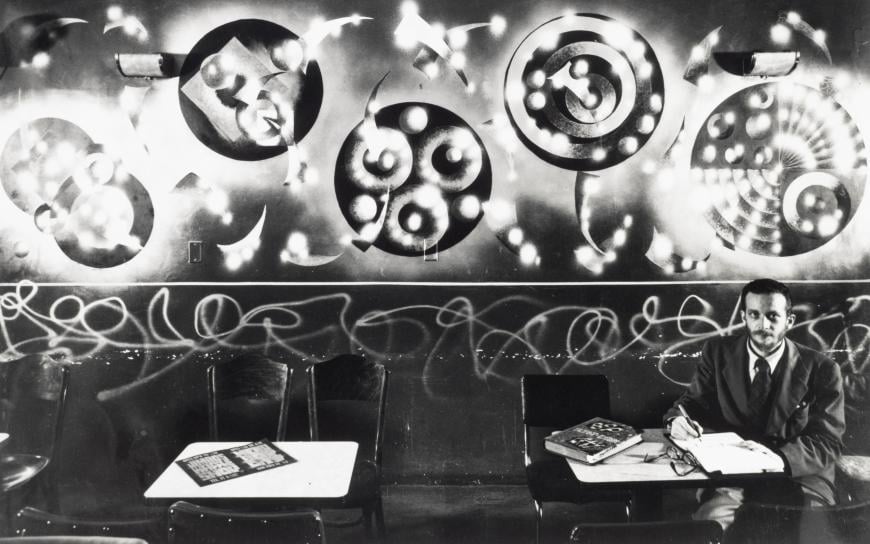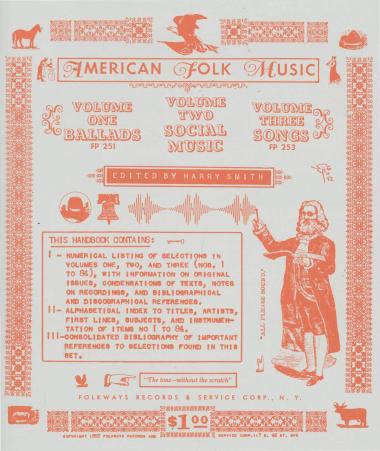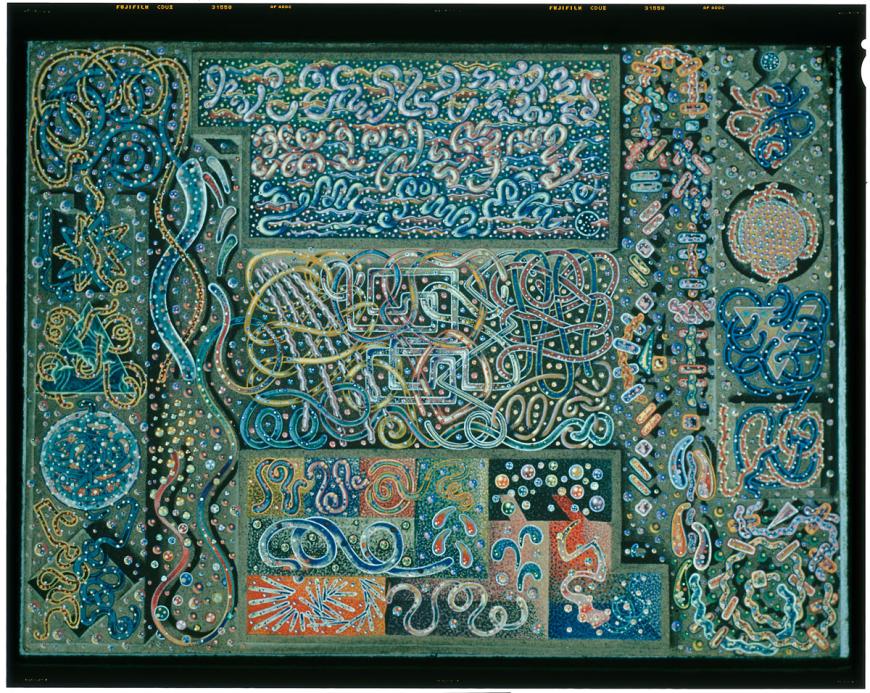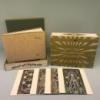
The poet Paola Igliori says that when Harry Smith died in 1991, her friend sang while she held him in her arms. In his 20s, Smith lived above an after-hours jazz club in San Francisco’s Fillmore District and at night searched out bebop, hearing musicians like Dizzy Gillespie and Charlie Parker. Later Smith moved to New York, and one of his reasons for wanting to live there was to be able to see Thelonious Monk play. Around that time, Smith compiled one of the most influential releases of recorded sound, the Anthology of American Folk Music, first issued in 1952. He received the Chairman’s Merit Award for it at the 1991 Grammy Awards, and in his acceptance speech, he said, “I’m glad to say that my dreams came true. I saw America changed through music.”
Music was central to Smith’s life, but he had a stunning number of passions and talents. He was an experimental filmmaker, an artist, a shaman, a musicologist, a collector of paper planes, Ukrainian eggs, and figures made of string. For the first time, his work is on view at a major museum, with Fragments of a Faith Forgotten: The Art of Harry Smith running through Jan. 28, 2024, at New York’s Whitney Museum of American Art.

Smith is probably best known for the Anthology, which inspired hundreds of musicians, including Joan Baez, Bob Dylan, Pete Seeger, and Jerry Garcia. It came about after Smith, running low on money in New York, approached Moses Asche, the co-founder of Folkways Records, to sell his collection. Instead, Asche suggested Smith put together the Anthology.
In three sections of two LPs each — “Ballads,” “Social Music,” and “Songs” — the Anthology compiles 84 tracks of fiddle music, Appalachian folk songs, gospel, and blues recorded between 1926 and 1934.
The Anthology has fascinated music journalist and author Greil Marcus for more than 50 years. The Whitney’s website has a short recording of Marcus talking about Smith and the Anthology, which Marcus found a copy of in a record store in 1970. He says when he played it, about 90 percent made no sense to him, but some of the songs, such as Bascom Lamar Lunsford’s “I Wish I Was a Mole in the Ground,” hit him hard.
“Harry Smith, in a sense, drew a new map of America and some of the landmarks through the songs that he collected and that he presented in strange sequences that made sense at first only to him and later made sense to millions of people,” Marcus says on the audio recording. “There were presidential assassinations, there’s the sinking of the Titanic, there was pestilence, there were famous train crashes, all kinds of things that were really part of the history of the United States but sung by strange voices, with words describing these shared events in ways that have never been heard before.
“Harry Smith put this together to say to the country, to say to posterity, ‘There’s more to America than you ever suspected. There are different kinds of people than those you’ve ever met. There are different kinds of people hiding inside people you have met. You don’t really know this country, and I’m going to show it to you.’”

Whitney curator Elisabeth Sussman worked with artist Carol Bove to create an accessible exhibition that would tell the story of Smith’s life and work. It’s organized chronologically, touching on his youth in Washington state, his interest in anthropology, his time in the Bay Area (where along with bebop, he got involved in experimental film), his “jazz paintings,” and his collection of paper planes and string figures. Smith’s experimental films include Mahagonny, which is based on Kurt Weill and Bertolt Brecht’s opera Rise and Fall of the City of Mahagonny, and Heaven and Earth Magic Feature.
Sussman says that the part of the exhibition where visitors can listen to the Anthology is remarkable.
“It’s at the very end of the gallery in a designated space, where you can sit on couches, look out at the Hudson River — you can see the Statue of Liberty — and there are speakers sunk in the wall and video monitors in front of the couches. You can sit on them and listen to the speakers and watch the program notes that Harry Smith made for the anthology simultaneously playing,” Sussman says. “So if you want to have a sort of chill-out experience and really get into this Anthology, we’ve provided quite a spectacular space for it.”

The museum has gotten a great response to the show, Sussman says, and has seen a variety of visitors, some there because they’re Harry Smith fans and some brought in by one of the Whitney’s other current exhibitions, Henry Taylor: B Side, who become Harry Smith fans.
“The Harry Smith show is all painted battleship gray, and the lighting is low. When you get off the elevators and you look in that direction, you know you’re in a different place. Henry Taylor is all white rooms and galleries,” Sussman explains.
Visitors to the museum are “drawn into the Harry Smith show,” she says. “And once they’re in, they’re kind of amazed by it. I do think this show is going to put him out there as somebody to be reckoned with in the history of American art and culture.”


